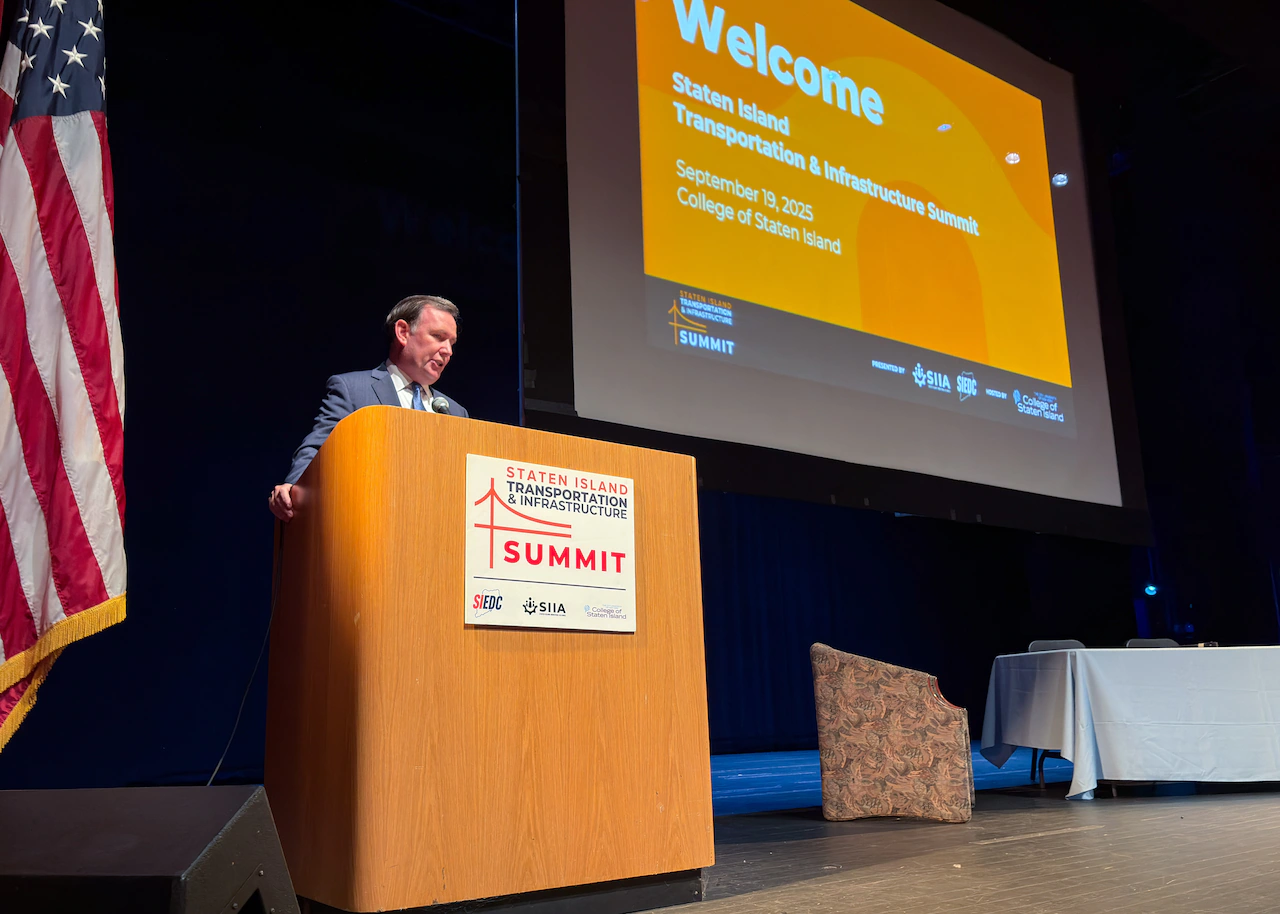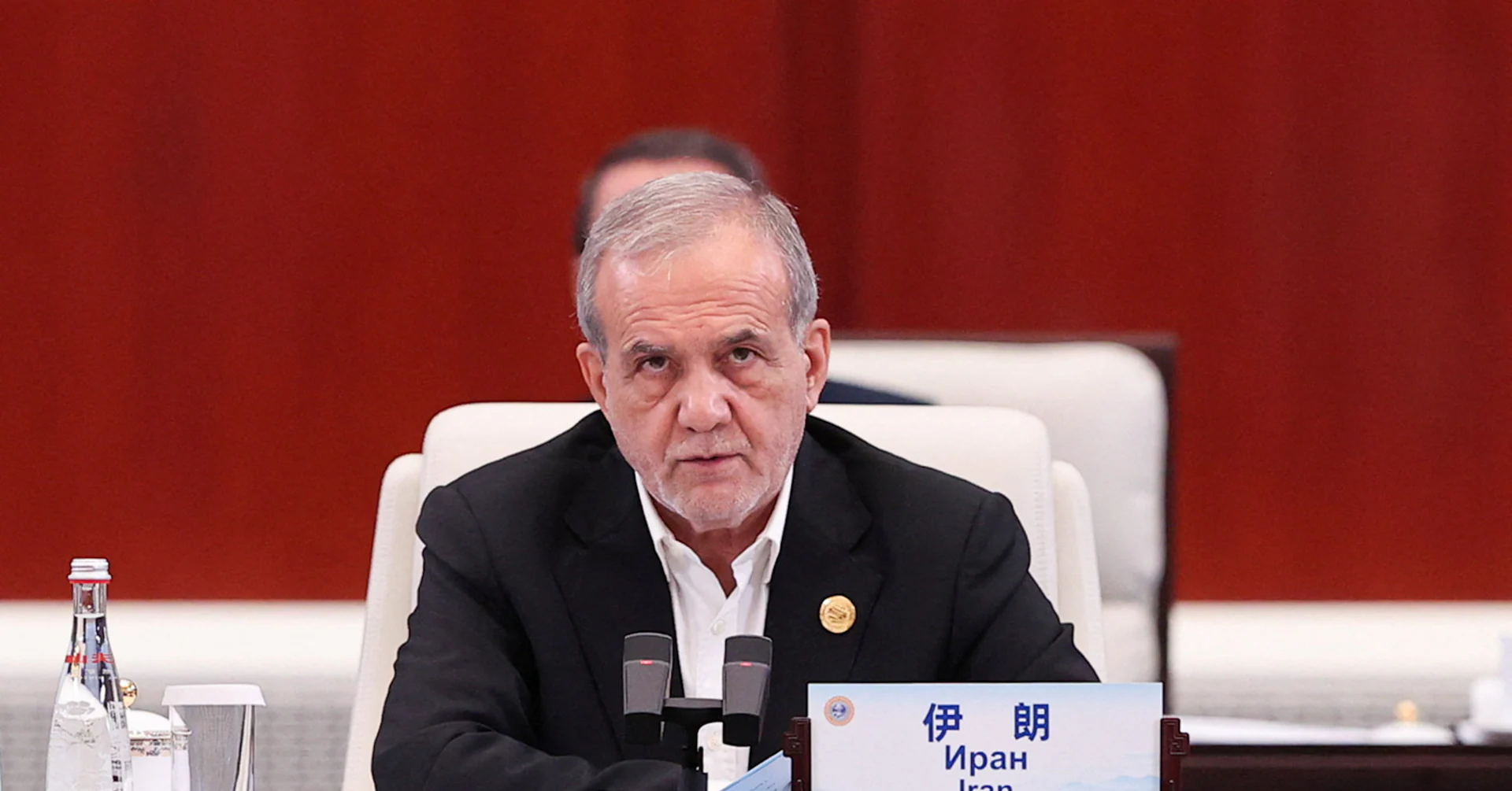
STATEN ISLAND, N.Y. — Staten Island’s business and community leaders gathered at the College of Staten Island in Willowbrook on Friday to discuss the future of transportation, construction, housing, and energy in the borough.
Presented by the Staten Island Economic Development Corporation and Staten Island Industrial Alliance, the Transportation and Infrastructure Summit focused on the different challenges that are unique to Staten Island and what can be done in response to them.
“What role do we play? How do we move these challenges forward? How do we address these challenges,” SIEDC President and CEO Michael Cusick said when describing what he saw as the key questions of the summit.
“It’s everybody in this room. Not just the panelists but the folks who are here to gather information — to contribute information in these roundtables today, which is important for the development of Staten Island going forward,” Cusick continued.
City and state agencies, nonprofit leaders, and industry executives were all present at the event, discussing topics including transportation policy, changes to land use, and local energy projects.
During each session, emphasis was placed on how the people and businesses on Staten Island can tap into new developments in these, and other, respective fields.
Discussions included “Congestion Pricing: Impacts and Next Steps,” during which panelists spoke about early trends in congestion pricing data and the effect the program is having on local transportation.
Though representatives from the Metropolitan Transportation Authority, New York City Department of Transportation, and New York University’s Rudin Center for Transportation spoke about improved public transit on Staten Island due to congestion pricing, such as faster express buses, much of the information presented focused on improvements within the congestion zone in Manhattan.
“From the preliminary data I’ve seen, it’s been little effect or reducing the travel times by a minimal amount, like 3%,” said Sarah Kaufman, director of the NYU Rudin Center, when asked about direct effects on Staten Island’s traffic.
“That’s I guess a positive if there hasn’t been the added traffic that was predicted before the program went into place,” she continued.
Frank Farrell, senior vice president of the MTA Bus Company, also pointed to improvements on Staten Island that were funded by congestion pricing tolls — like signal upgrades, new power substations, and the new train cars on the Staten Island Railway — as benefits of the program.
“I know there’s a lot of political opinions about the program, but from a service perspective it really is working for Staten Island and there is a lot going on with the infrastructure upgrades,” Farrell explained.
Another roundtable discussion, called “Domestic Energy, Local Vision and Regional Impact,” explained the benefits possible of all stages of offshore wind projects, from local jobs to lower energy bills.
Panelists there included: Atlantic Offshore Terminals President and CEO Boone Davis; Senior Director of Economic Development at Local Content Dwayne Wilkinson; and Peter Lion, a senior advisor for offshore wind at the New York State Research and Development Authority.
Davis, whose company is building the Arthur Kill Terminal, a specialized port at the foot of the Outerbridge Crossing where offshore wind turbines and towers could be assembled before being brought out to sea, also provided an update on new challenges for the project at the federal level.
“We did just lose a $48 million grant award, which is very disappointing. It’s not the end of the world,” Davis said. “There’s other sources of funding, including at the state level.”
“We’re no longer envisioning a construction start this spring as we had been hoping for last year and been working with contractors and others to prepare for but I think in the couple of years, we’ll have more clarity on when it could begin,” he continued. “The important thing is we’re not giving up.”
Also speaking at the event was Councilmember Frank Morano, a Republican representing the Island’s South Shore, who outlined what the summit was trying to address.
“The decisions we make about transportation and infrastructure are not just going to shape our commutes, but they shape our quality of life, our economic growth, and whether our kids and grandkids choose to build their future here or just build a permanent tent on the Staten Island Ferry,” Morano said. “Staten Island deserves transportation solutions that match the scale of our challenges.”



